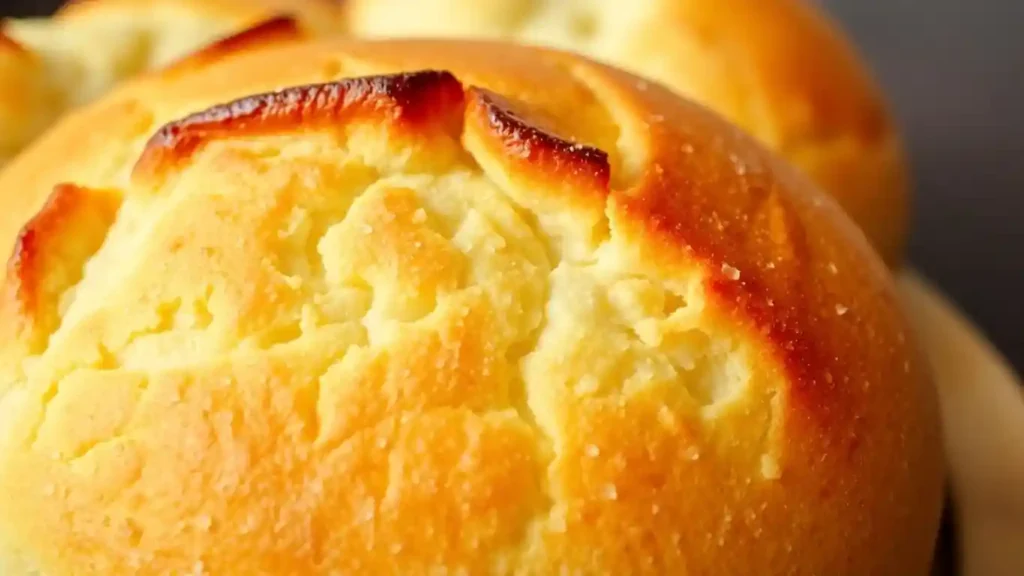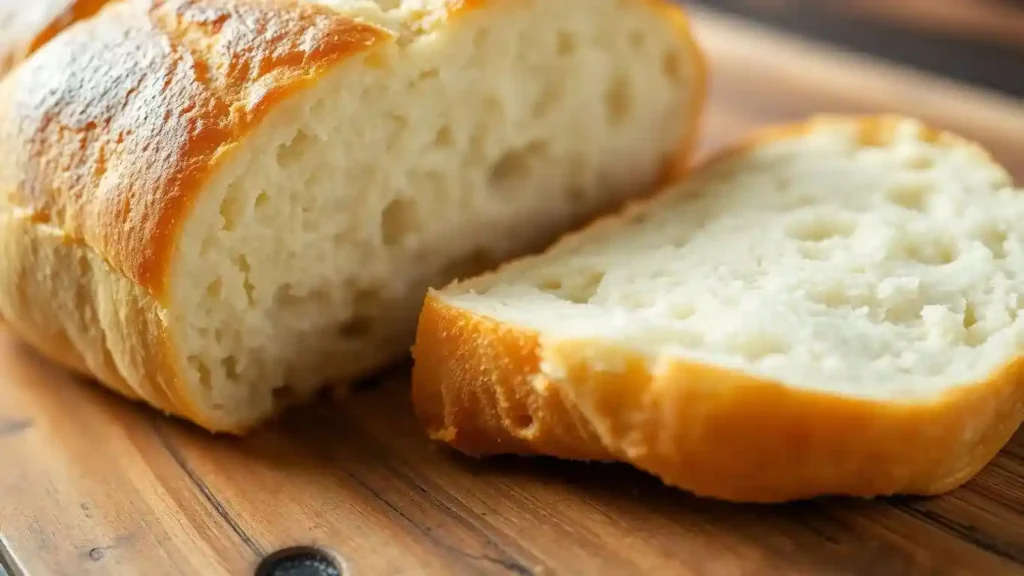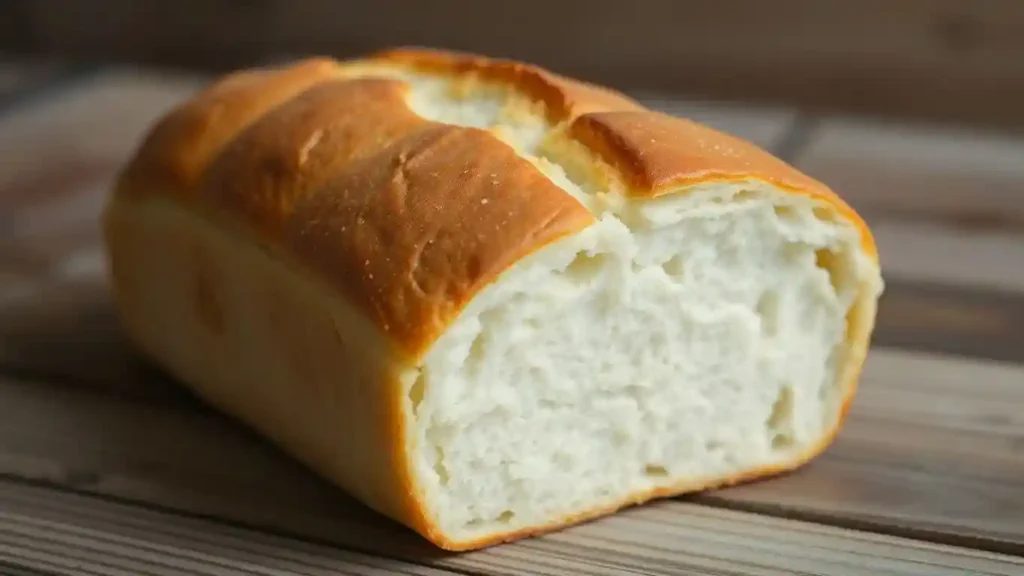Ever tried to bake a loaf of bread and ended up with something more like a brick? Yeah, it happens to the best of us. Getting bread soft and not crumbly is a bit of a science, but it’s totally doable with a few tweaks and tricks. Whether you’re kneading that dough or playing around with ingredients like milk and butter, there are a bunch of ways to make your homemade bread bakery-level soft. Let’s dive into some of the key takeaways that’ll help you bake the perfect loaf every time.
Table of Contents
Key Takeaways
- Knead your dough just right. Overdoing it can make bread tough.
- Keep the dough well-hydrated for the best texture.
- Adding fats like butter or oil can help make bread softer.
- Proof your dough perfectly to avoid a crumbly texture.
- Store your bread properly to keep it soft longer.
Mastering the Art of Kneading for Soft Bread

Avoid Over-Kneading to Prevent Tough Bread
Kneading is where the magic happens in bread making. It’s about creating the perfect gluten structure. But watch out—over-kneading can make your bread tough and chewy. When you knead the dough, aim for a smooth, elastic texture that forms a tight ball. If you’re using a bread machine, keep an eye on the timer. For hand-kneading, ten minutes is often the sweet spot. Remember, it’s better to under-knead slightly than to overdo it.
The Poke Test: Ensuring Proper Kneading
Not sure if your dough is ready? Try the Poke Test. Give your dough a firm poke with your finger. If the indentation fills back quickly, you’re good to go. If not, keep kneading. This simple test helps ensure your bread dough is at the right stage for shaping into a loaf pan or bread roll.
Techniques for Perfect Gluten Development
Developing gluten is crucial for that soft, chewy bread texture. Use Bread Flour, which has a higher protein content and supports gluten formation. Start by mixing your ingredients in an oiled bowl until they form a base dough. Then, knead using a dough hook attachment if you have one. This helps incorporate air, making your homemade bread lighter and fluffier. For those using a white bread dough recipe, remember to let the dough rest after kneading. This rest period allows the gluten to relax and makes it easier to shape your loaf of bread.
Kneading might seem tedious, but it’s a vital step in creating homemade bread that’s perfect for anything from sandwiches to a base for avocado toast. Stick with it, and you’ll notice the difference in your loaves of bread.
Master these steps, and you’ll be well on your way to baking soft, delicious bread every time.
The Role of Hydration in Achieving Soft Bread

Balancing Dry and Liquid Ingredients
Getting the right balance between dry and liquid ingredients is like walking a tightrope. You want your dough to be just right—not too sticky and not too dry. The dough’s hydration level is crucial for its texture and softness. If you add too much flour, your bread might end up dense and crumbly. On the flip side, too much water can make it a sticky mess. It’s all about finding that sweet spot. A good rule of thumb is to start with a little less flour and gradually add more if needed. Keep an eye on your dough as it mixes in the bowl, adjusting as you go.
The Importance of Water in Yeast Activation
Water is more than just a wet ingredient. It’s a key player in activating yeast. Warm water, ideally between 100°F and 110°F, helps wake up those yeast cells, making them ready to work. If the water’s too hot, it could kill the yeast, and if it’s too cold, the yeast might not activate properly. This temperature rise is essential for the yeast to start bubbling and creating the gas that helps your bread rise. Think of it as giving your yeast a warm bowl shower to get them going.
Adjusting Measurements for Optimal Texture
Sometimes, the weather or even the type of flour you’re using can affect how much water you’ll need. On a humid day, you might need less water, while on a dry day, a bit more. It’s all about adjusting and tweaking as you go. Test your dough by poking it; it should bounce back slightly. If it feels too dry or too sticky, adjust your ingredients accordingly. Remember, practice makes perfect, and with each loaf, you’ll get better at judging the right consistency.
Incorporating Fats and Sugars for Softer Bread
Using Oils to Inhibit Excess Gluten Formation
Incorporating oils like melted butter or soft butter into your dough can make a world of difference. Oils work by coating the flour particles, which helps limit gluten formation. This is crucial because too much gluten can make your bread tough and chewy. By using oils, you ensure a softer texture without compromising the rise. Imagine your dough resting in a greased bowl, absorbing the richness of the oils, and turning into a tender loaf.
How Sugar Enhances Bread Texture and Flavor
Adding sugar to your bread recipe is more than just sweetening the deal. Sugar acts as a tenderizing agent, weakening gluten strands and absorbing water, which results in a softer crumb. Yeast loves sugar too; it feeds on it to produce carbon dioxide, helping your dough rise. You can experiment with different types of sugar, like granulated sugar or even cinnamon sugar, depending on the flavor you aim to achieve.
The Impact of Fats on Bread Moisture
Fats like apple butter or peanut butter can be an additional ingredient that transforms your bread from dry to delightful. Fats help retain moisture within the bread, ensuring it stays soft for longer. This is particularly important if you’re planning to store your bread for a few days. A pinch of sugar combined with fats not only aids in moisture retention but also enhances the overall taste, giving you a loaf that’s both flavorful and soft.
Soft bread isn’t just about the right ingredients; it’s about the right balance. Each component plays its part in creating a loaf that’s not just delicious but also has the perfect texture.
Secrets to a Softer Crust

Baking at Lower Temperatures for Tender Crust
To achieve a softer crust, consider baking your bread at a lower temperature. While artisan breads often bake at high temperatures for a crisp finish, a gentler heat can work wonders for a tender crumb. Aim for 325 to 350 degrees Fahrenheit and extend the baking time to about 45 minutes to an hour. This slow rise in temperature helps maintain moisture, leading to a softer crust.
Brushing with Butter for Added Softness
Applying unsalted butter before or after baking is a game-changer. The fats in butter help retain gases during baking, ensuring the dough rises properly and softens the crust. If you forget to brush before baking, no worries—spread some butter after baking to minimize crisping as it cools. This technique is especially useful for creating that melt-in-your-mouth texture.
Trapping Steam for a Moist Crust
Another nifty trick is to trap steam around the bread as it cools. Covering the loaf with a towel or placing it under a bowl allows the steam to condense back into the bread, resulting in a tender crumb. Be cautious, though—a bit too much steam can lead to a soggy crust. Keep an eye on your bread to ensure it doesn’t turn into a mushy mess.
Experimenting with these methods can lead to the perfect loaf with a softer crumb. Remember, the key is balancing moisture and heat to achieve the ideal texture. Whether you’re making a classic loaf or something special like cinnamon toast, these tips will help you bake bread with a delightfully soft crust.
The Science of Proofing and Its Effect on Bread Texture
Avoiding Overproofing for Better Crumb
Proofing, or letting your dough rise, is where the magic happens in bread making. It’s all about timing. Letting your dough rise too long can lead to a loaf that’s more flat than fluffy. The key is to find the right balance of gluten development. If you overproof, the gluten structure becomes too relaxed, and your bread might collapse. To avoid this, keep an eye on your dough’s rise. A simple poke test can help: if the indent remains, you’re good to go. If not, give it a bit more time.
The Finger Test: Checking Dough Rise
This one’s a classic. When you think your dough has risen enough, gently press your finger into it. If the dough springs back slowly, it’s ready. If it bounces back quickly, it needs more time. This test helps ensure the right amounts of gluten are developed, contributing to that ideal bread texture we all crave.
Timing Your Proofing for Optimal Results
Getting the timing right is crucial. Too little time, and your bread won’t rise well. Too much, and it might collapse. Aim for a rise until the dough has doubled in size, usually about 45 minutes to an hour. Remember, the balance of gluten is what you’re aiming for. Adjust based on your kitchen’s temperature and humidity. Cooler environments might need a bit more time, while warmer ones less.
Proofing might seem simple, but it’s a dance of patience and precision. The right timing and technique will ensure your bread is soft and not crumbly, with a perfect texture every time.
The Impact of Milk and Dairy on Bread Softness
Using Milk for a Richer, Softer Loaf
Milk is a game-changer in bread making, adding richness and softness to your loaf. When you incorporate milk into your dough, the lactose (milk sugar) contributes a gentle sweetness, while the proteins enhance the bread’s nutritional value. The fats in milk help trap carbon dioxide during baking, resulting in a softer loaf. If you’re aiming for extra softness, consider using milk with a higher fat content. Experimenting with different milk-based recipes can lead to delightful variations in texture and flavor.
The Benefits of High-Fat Dairy in Bread
High-fat dairy products, such as cream or full-fat milk, can significantly affect the softness of your bread. These ingredients add moisture, which is crucial for a tender crumb. The fat content in dairy butter, in particular, can help inhibit gluten formation, preventing the bread from becoming too chewy. If you’re looking for alternatives, plant-based butter can also be used to achieve similar softness, though the flavor might differ slightly.
Exploring Recipes with Milk as a Key Ingredient
Incorporating milk into your bread recipes can be as simple as substituting water with milk or trying out specific recipes that highlight milk as a key ingredient. From classic milk bread to more adventurous options, the possibilities are endless. Don’t forget to explore different brands of butter that can enhance the flavor and texture of your bread. Remember, each brand might bring a unique taste, so finding the right one could be a fun journey in your baking adventure.
Milk and dairy can transform your bread from ordinary to extraordinary. By understanding how these ingredients work in your dough, you can bake loaves that are not only soft but also full of flavor. Whether you’re using dairy or plant-based options, the key is to experiment and find what works best for your taste and texture preferences.
For those looking to add a tangy twist to their baking, consider using kefir as a substitute for sour cream to enhance moisture and density in your bread.
Proper Storage Techniques to Maintain Bread Softness
Cooling Bread Before Slicing to Retain Moisture
After baking your delicious white sandwich bread, the temptation to slice it immediately can be overwhelming. But hold off! Letting your bread cool completely before cutting into it is crucial for maintaining its moisture. The steam trapped inside the crust continues to work its magic, keeping your bread soft and avoiding a crumbly texture. For a typical loaf, wait at least an hour, or two hours if you can muster the patience. This waiting period allows your bread to finish baking internally, ensuring a tender crumb.
Using the Right Tools for Slicing Bread
When it’s finally time to slice into your freshly baked loaf, using the right tools can make all the difference. A serrated knife is your best friend here. Its saw-like edges cut through the bread without squashing it, helping to maintain the loaf’s structure and prevent excess crumbs. This tool is especially important for softer breads like banana bread or a White Bread Recipe.
Storing Bread to Prevent Crumbly Texture
Proper storage is key to keeping your bread moist and delicious for days. Homemade bread lacks the preservatives found in store-bought varieties, so it requires a bit more care. Wrap your loaf in oiled plastic wrap or airtight wrap to lock in moisture. If you plan to consume it within a day or two, a bread box or an airtight container works wonders. For longer storage, freeze the bread. Wrap it tightly in plastic, then place it in a freezer bag. When you’re ready to enjoy it again, let it thaw naturally, and it will be almost as good as fresh. Avoid refrigerating or microwaving your bread, as these methods can dry it out, leading to a stale loaf.
Storing your bread correctly not only keeps it soft but also extends its life, making it perfect for recipes like French toast or toasting up a slice for breakfast. Remember, the way you store your bread can significantly affect its texture and flavor, so take the time to do it right.
Wrapping It Up
So, there you have it! Making bread that’s soft and not crumbly isn’t some mystical art. It’s all about getting the basics right. From kneading just enough to using the right amount of liquids and fats, each step plays a part. Don’t forget the little tricks like brushing with butter or using milk for that extra softness. And hey, if your first loaf doesn’t turn out perfect, don’t sweat it. Baking is a journey, and every loaf is a step closer to that perfect, soft bread. Keep experimenting, and soon you’ll be baking bread that even your local bakery would envy!
Frequently Asked Questions
Why does my homemade bread turn out hard and crumbly?
If your bread is hard and crumbly, it might be due to over-kneading, not enough moisture, or incorrect ingredient measurements. Make sure to knead just enough and check your liquid-to-flour ratio.
How can I make my bread softer?
To make bread softer, try adding fats like butter or oil, use milk instead of water, and ensure proper proofing. Also, avoid over-baking and store bread properly to maintain softness.
What’s the role of sugar in bread making?
Sugar helps in bread making by feeding the yeast, which helps the dough rise. It also adds sweetness and helps create a softer texture by absorbing moisture.
How do I know if I’ve kneaded my dough enough?
You can use the ‘poke test’ to check if your dough is well-kneaded. Poke the dough with your finger; if the indentation fills back quickly, it’s ready. If not, knead a bit more.
Why is my bread crust too hard?
A hard crust can result from baking at high temperatures. Try baking at a lower temperature and brushing the crust with butter for added softness.
How should I store bread to keep it soft?
To keep bread soft, let it cool completely before storing. Use airtight containers or plastic bags, and avoid refrigeration, as it can dry out the bread.
How to Make Bread Soft and Not Crumbly: Essential Tips & Tricks
- Total Time: 50 minutes
- Yield: 1 loaf (about 10–12 slices) 1x
Description
Struggling with homemade bread that turns out hard and crumbly? Learn the secrets to baking soft, fluffy bread every time. From kneading techniques to ingredient tweaks, this guide covers everything you need to know to achieve bakery-quality loaves at home.
Ingredients
- 3 cups all-purpose or bread flour
- 1 ½ teaspoons salt
- 2 tablespoons sugar (or honey)
- 2 teaspoons active dry yeast
- ¾ cup warm milk (or water) (100-110°F)
- 2 tablespoons butter (melted) or oil
- 1 egg (optional, for richer texture)
Instructions
1. Knead Just Enough for a Soft Texture
Kneading activates gluten, but over-kneading can make bread dense. Aim for 10 minutes by hand or 7 minutes in a stand mixer. Use the poke test—if the indentation fills back slowly, the dough is ready.
2. Hydration Is Key: Balance Liquid & Dry Ingredients
- Avoid a dry dough by using warm milk or water instead of cold liquids.
- Milk softens the crumb, while butter or oil prevents excess gluten formation.
- Dough should be slightly sticky but not overly wet—adjust flour gradually as needed.
3. Use Fats Like Butter or Oil for Softness
- Butter, oil, or eggs enrich the dough, keeping it moist and soft.
- Fats also coat gluten strands, making the bread tender.
4. Perfect Proofing for a Fluffy Crumb
- 1st rise: Let dough double in size (about 1 hour at room temp).
- 2nd rise: After shaping, allow another 30-40 minutes before baking.
- Use the finger test—if a light press leaves a slow-filling dent, it’s ready to bake.
5. Bake at a Lower Temperature for a Softer Crust
- 325-350°F helps keep the crust soft while allowing the inside to cook through.
- Avoid high heat, which makes the crust tough.
6. Brush with Butter After Baking for a Tender Crust
Right after baking, brush with melted butter to keep the crust soft and flavorful.
Notes
Storage & Freshness Timeline:
| Storage Method | Freshness Duration |
|---|---|
| Room Temperature | 3-4 days (airtight container) |
| Refrigeration | Not recommended (dries out) |
| Freezing | Up to 3 months (wrapped tightly) |
Best Practice: Store in a bread box or wrap in plastic wrap to maintain moisture.
- Prep Time: 15 minutes
- Cook Time: 35 minutes
- Category: Baking, Bread Making
- Method: Oven Baking
- Cuisine: American, European
Nutrition
- Calories: ~150 kcal
- Sugar: 3g
- Fat: 4g
- Saturated Fat: 2g
- Carbohydrates: 22g
- Fiber: 1g
- Protein: 4g
Keywords: Why is my homemade bread hard and crumbly? How to make soft homemade bread Best ingredients for soft bread How to store homemade bread to keep it soft
